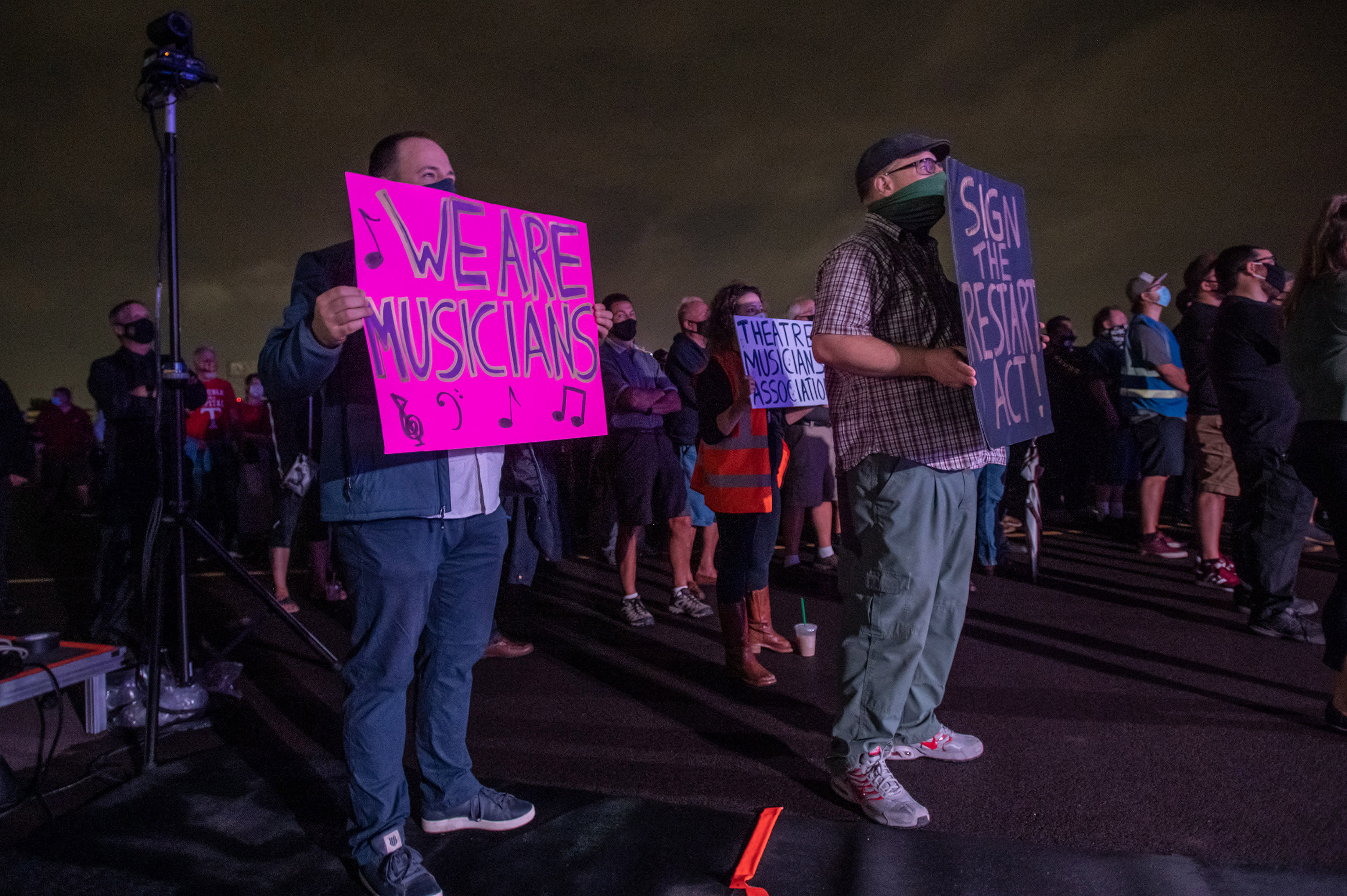Unemployment benefits are less than minimum wage in many states

Workers and musicians participate in a campaign to pressure Congress to provide financial help to entertainment and live event industry workers decimated by the coronavirus pandemic on September 1 in Chicago, Illinois.
Timothy Hiatt | Getty Images Entertainment | Getty Images
Many states pay unemployment benefits to workers at a level below the federal minimum wage.
That may leave families with little income to pay bills at a time when many are no longer receiving a federal unemployment subsidy and jobs are scarce. Workers with existing health conditions may also fear returning to work due to the risk of Covid-19 infection or may be unable to find a job due to childcare duties.
In six states — Alabama, Arizona, Florida, Louisiana, Mississippi and Tennessee — the largest benefit a worker can hope to collect is less than the federal minimum wage of $7.25 an hour, according to a CNBC analysis.
‘Woefully inadequate’
“Regular unemployment insurance benefits in the U.S. are woefully inadequate in some states,” said Peter Ganong, an economist and assistant professor at the University of Chicago.
These maximum unemployment benefit levels are determined by state lawmakers and aren’t fully tied to cost of living, according to labor economists.
Mississippi has the lowest benefit cap of any state — $235 a week. That translates to a wage of $5.88 an hour for a full-time worker.
More from Personal Finance:
She gets just $33 a week in unemployment benefits. Trump’s $300 boost isn’t coming.
Don’t let these Social Security myths trip you up
5 things to know about the payroll tax deferral
States can pay a minimum wage for workers that exceeds the federal minimum of $7.25 an hour.
Twenty-one states — including Alabama, Louisiana, Mississippi and Tennessee — do not set a higher minimum wage, according to the U.S. Labor Department.
Arizona’s, for example, is $12 an hour. But the state’s unemployment system pays the equivalent of $6 an hour at the upper end — or, half the state’s minimum wage.
Meanwhile, some of the highest-paying states offer up to the equivalent of roughly $18-$20 an hour in benefits. In Massachusetts, individuals can get up to around $31 an hour, depending on how many dependents they have.
Low benefit amounts are of greater concern in states with a higher relative cost of living, like Arizona and Florida, as opposed to some, such as Mississippi, that tend to be less expensive, Ganong said.
And while many states adjust their benefit caps for inflation, some don’t. Florida, for example, has had a $275-a-week maximum jobless benefit in place for more than two decades. (That translates to $6.88 an hour for a full-time worker.)
In July, the average person received an unemployment benefit less than the federal minimum wage in 22 states, according to a CNBC analysis. They ranged from an equivalent of $4.52 an hour in Louisiana to $7.15 in Wisconsin.
(The analysis is based on a full-time, 40-hour work week. Part-time workers can also receive unemployment benefits, which likely lowered state averages.)
Events and entertainment workers gather in a protest to bring attention to their labor and unemployment on August 19 in Las Vegas, Nevada.
BRIDGET BENNETT | AFP | Getty Images
Groups will have differences in how they view the shortfall in unemployment benefits compared to state and federal minimum wage, according to Julia Lane, an economist and professor at New York University.
On one hand, some will say paying higher benefit levels is a disincentive to work. Others believe higher benefits are essential right now since many workers lost their jobs through no fault of their own due to the pandemic.
There are about three unemployed workers per job opening, according to the Bureau of Labor Statistics.
“And you might have different answers depending on whether it’s an 18-year-old kid living with their parents, or a single mother of three children who has no other means of support,” Lane said. “So, it’s not an absolute.”
$600 unemployment boost
A $600-a-week supplement to state unemployment benefits helped many to make up for any income shortfall since around early April. But that subsidy, enacted by the CARES Act, a federal coronavirus relief law, expired at the end of July.
That’s left millions of Americans with just their state-allotted benefit for more than a month.
State benefits replaced about half of lost wages for the typical unemployed individual from April to July, according to a recent analysis published by economists from the University of Chicago.
The $600 weekly enhancement pushed that “wage replacement rate” up to 150% over that period — a boost that had an outsized effect for lower-wage workers, who’ve “borne the brunt of this recession so far,” Ganong said.
“That’s why the $600 a week was such a big deal — if you’re in one of the poorer states, it’s way better than the [state] unemployment benefits,” Lane said.
The Trump administration created a Lost Wages Assistance program in early August to provide an extra $300 a week to unemployed workers. (Some states are kicking in an extra $100 a week, for a total of $400.)
However, just a handful have begun issuing those payments. Many states will take several more weeks to begin sending out the subsidy. Program funding is only estimated to pay out five weeks’ worth of the supplement. Thousands of workers also won’t be eligible due to program restrictions.




